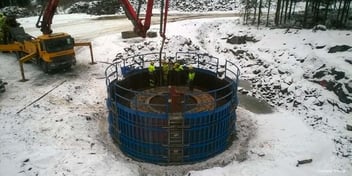Financial-grade energy yield assessment of multiple single turbine sites, including RSPB, H&H Celcon and QEH. We minimise uncertainties by using quality wind analysis regardless of project size.
We work on wind farms of all sizes – from 1GW+ offshore wind farms to individual turbines owned by communities, charities and farmers. Our work is tailored to meet the individual requirements of our clients, whilst maintaining the same level of diligence and expertise on all projects.
Ecotricity was developing a number of single turbine sites across the UK and due to the small size of these projects, budgets were lower and consequently measurement masts were not installed on Ecotricity’s H&H and QEH sites.
The UK’s buoyant Feed In Tariff market over the past few years has seen many medium-scale turbines developed and constructed under similar circumstances. Unfortunately, our technical advisory services team has seen flawed energy yield assessments for such turbines, based solely on reference sources such as the NOABL wind database, and often with basic methodology and misguided assumptions.
Applying ‘big’ wind farm quality analysis regardless of project size, long-term wind resource at the H&H and QEH sites was determined using a range of reference sources and mesoscale map data, to minimise uncertainties and avoid the ‘eggs in one basket’ approach.
Both turbines are situated close to built-up areas so the surrounding terrain and its influence on energy yield were thoroughly considered and appropriate turbine performance assumptions applied. The QEH turbine is located beside a hospital; this required us to consider shadow flicker impacts and turbine shutdown strategies to avoid ice throw.
At Ecotricity’s wind turbine on RSPB’s The Lodge bird reserve, a shutdown strategy is in place to mitigate impact on the local bat population at certain times of day and year, and in certain weather conditions. By simulating the power output of the proposed turbine over time, we were able to accurately estimate the loss in energy yield resulting from the shutdown strategy.
By applying high quality analyses to smaller projects, we provided Ecotricity with greater certainty of the future energy yield, thereby allowing them to finance the construction of these projects off balance sheet with confidence.



